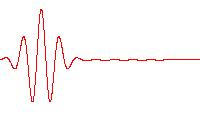
The aim of this section is to introduce and motivate partial differential equations (PDE). The section also places the scope of studies in APM346 within the vast universe of mathematics.
A partial differential equation (PDE) is an equation involving partial derivatives. This is not so informative so let’s break it down a bit.
An equation is a mathematical statement usually saying one thing equals another thing. Expressions like 3+4=7 are examples but more interesting examples are statements involving variables like $$ (x+1)^2 = x^2 + 2x + 1. $$ This statement is true for all choices of the variable $x$ among all values in, say, the real numbers $\mathbb{R}$.
An ordinary differential equation (ODE) is a mathematical statement about a function which depends on one independent variable which involves the independent variable, the function, and derivatives of the function:
$$ G( t, f(t), f’(t), f^{(2)}(t), f^{(3)}(t), \dots, f^{(n)}(t)) = 0.$$
This is an example of an ODE of degree $n$. Solving an equation like this on an interval $t \in [0,T]$ would mean finding a functino $t \longmapsto f(t) \in \mathbb{R}$ with the property that $f$ and its derivatives intertwine in such a way that this equation is true for all values of $t \in [0,T]$. The problem can be enlarged by replacing the real-valued $f$ by a vector-valued ${\bf{f}}(t)= (f_1 (t), f_2 (t), \dots, f_k (t))$. Even in this situation, the challenge is to find functions depending upon exactly one variable which, together with their derivatives, satisfy the equation.
When you have function that depends upon multiple variables, you can differentiate with respect to either variable while holding the other variable constant. This spawns the idea of partial derivatives. As an example, consider a function depending upon two real variables taking values in the reals: $$f: {\mathbb{R}}\times {\mathbb{R}} \longmapsto \mathbb{R}.$$ We sometimes visualize a function like this by considering its graph viewed as a surface in $\mathbb{R}^3$ given by the collection of points $$ [ (x,y,z) \in {\mathbb{R}^3}: z = f(x,y) ] $$ We can calculate the derivative with respect to $x$ while holding $y$ fixed. This leads to $f_x$, also expressed as $\partial_x f$ and $\frac{\partial}{\partial x} f$. Similary, we can hold $x$ fixed and differentiate with respect to $y$.
A partial differential equation is a mathematical statement about a function which depends on more than one independent variable which involves the independent variables, the function, and partial derivatives of the function:
$$ G(x,y, f(x,y), f_x (x,y), f_y (x,y), f_{xx} (x,y), f_{xy} (x,y), f_{yx} (x,y), f_{yy} (x,y)) = 0. $$
This is an example of a PDE of degree 2. Solving an equation like this would mean finding a function $(x,y) \longmapsto f(x,y)$ with the property that $f$ and is partial derivatives intertwine to satisfy the statement.
Examples of PDE:

(The expression $\Delta$ is called the Laplacian and is defined as $\partial_{xx} + \partial_{yy}$ on $\mathbb{R}^2$.)
 $$ i u_t + \Delta u = 0$$
$$ i u_t + \Delta u = 0$$
(discuss)
Consider the PDE. $$ a u_x + bu_y = 0$$
Inspection shows that we have a solution: $$ u(x,y) = f(bx - ay)! $$
Explain. Connect with $w_x =0$ so $w(x,y) = f(y)$ via coordinate rotation.
© 2012 Department of Mathematics, University of Toronto 